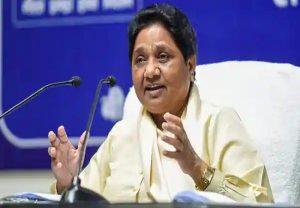Lucknow, 14 October: To improve the electricity system of the state, the Yogi government has made comprehensive improvements in the electricity system as per the needs of the huge population of the state and to give impetus to the economy.
The government has issued an order for reorganization by increasing the number of currently operational 25 distribution zones (zones) to 40 zones under the associate distribution corporations of Uttar Pradesh Power Corporation.
In this reorganization, all the metropolitan cities have been made separate zones. Separate zones of other districts connected to the zone of divisional headquarters have been created.
It is noteworthy that due to the large area of work of zonal officers and high work pressure, the government has not been able to monitor the electrical works and system properly and also the complaints of the consumers are not being resolved in time. Instructions were given to create new zones to reduce the scope of work.
These will be the new zones after reorganization
-Earlier there were 06 zones in Purvanchal Vidyut Vitran Nigam Limited, after restructuring now there are 09 zones. In this, Gorakhpur has now been divided into Gorakhpur I and II, Prayagraj into Prayagraj I and II, Varanasi has now been divided into Varanasi I and II. There was no change in Azamgarh, Basti, Mirzapur zones.
-Earlier there were 06 zones in Madhyanchal Vidyut Vitran Nigam Limited, after restructuring now there are 10 zones. In this, Bareilly has now been divided into Bareilly I and II, Lessa sis Gomti into Lessa sis Gomti I and II, Lessa Trans Gomti into Lessa Trans Gomti I and II, Lucknow into Sitapur and Rae Bareli zones. There was no change in Ayodhya and Devipatan zones.
-Earlier there were 06 zones in Dakshinanchal Vidyut Vitran Nigam Limited, after restructuring now there are 09 zones. In this, Aligarh zone has been divided into Aligarh and Etah, Kanpur by combining Kanpur I and II, Agra I and II and now it has been divided into Agra, Firozabad and Mathura zones. No changes were made in Banda and Jhansi zones.
-Earlier there were 06 zones in Paschimanchal Vidyut Vitran Nigam Limited, now 11 zones have been created. Ghaziabad zone has now been divided into Ghaziabad first, second and third zones, Meerut into Meerut first and second, Moradabad into Moradabad and Gajraula, Saharanpur into Saharanpur and Muzaffarnagar zones. No changes were made in Noida and Bulandshahr zones.
– No changes were made in the Kesco zone under Kanpur Electricity Supply Company Limited after restructuring.
Monitoring will be better
According to the instructions issued, now separate electricity zones have been created for big cities and metros like Varanasi, Gorakhpur, Prayagraj, Aligarh, Bareilly, Agra, Meerut, Mathura, Bijnor, so that better service can be provided to the consumers. Till now there was no division of urban and rural zones.
With this division, separate zones will be created for other areas including rural areas of those districts, which will enable better monitoring in those areas.
In this series, the zones of big cities like Lucknow and Ghaziabad have been re-divided and made smaller, so that monitoring can be better. There will now be four zones in Lucknow instead of the present two. Ghaziabad will now have three zones instead of the present one.
Available human resources will be utilized
The headquarters of the newly created zones Sitapur, Rae Bareli, Etah, Firozabad, Mathura, Gajraula and Muzaffarnagar will be at their indicated places.
The headquarters of all other zones will remain the same. No new posts will be created for the newly created zone. The required posts for the zone will be arranged from the human resources available by the concerned distribution corporation.
The tender process for already approved works will be done from the original zone only. The Chief Engineers of the newly created zone will be given all powers for these works from January 1, 2024.
With this restructuring, the power system of metropolitan cities will be further improved. There will also be improvement in the power distribution system of the divisional headquarters districts. There will be speed in the implementation of schemes and better monitoring of works can also be done. Besides, consumer complaints can also be resolved quickly.





